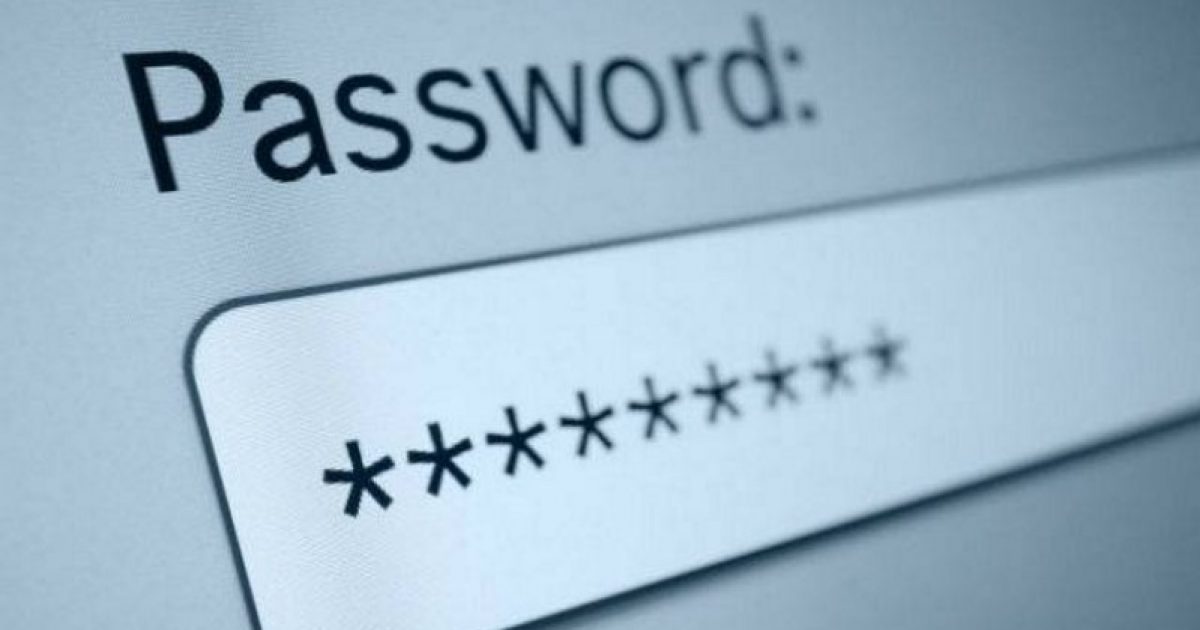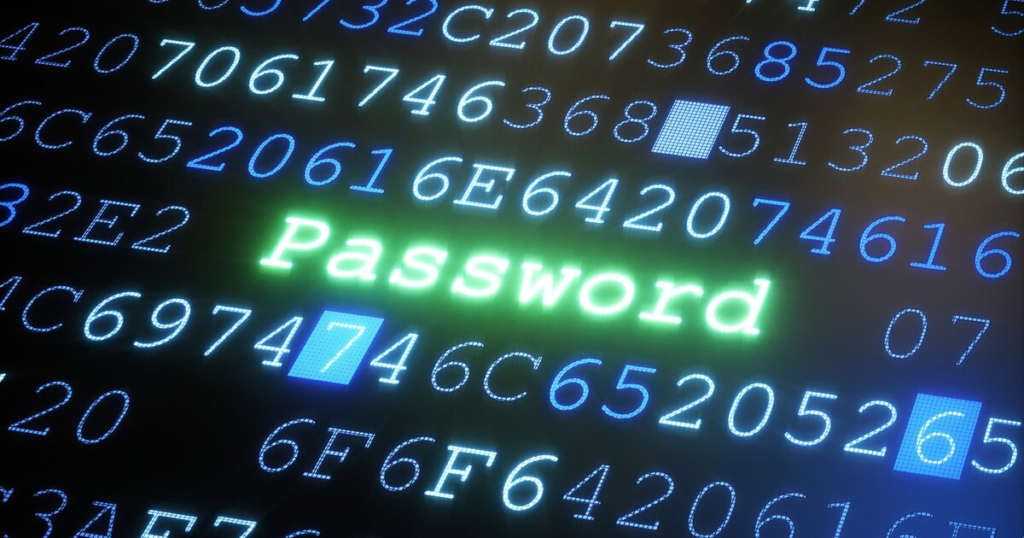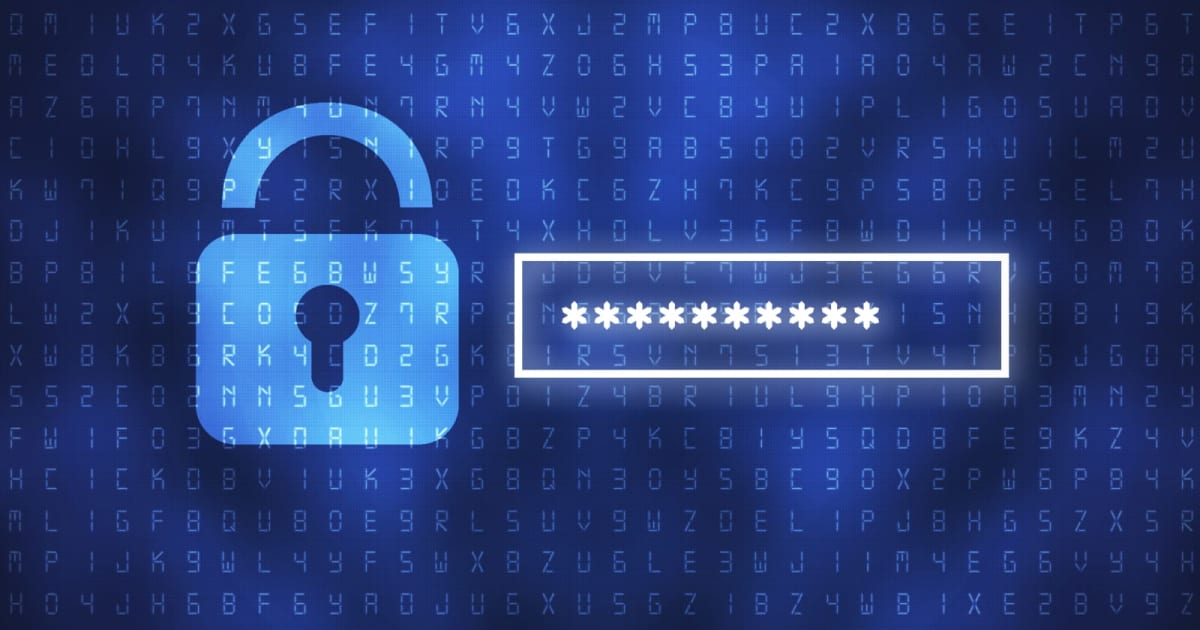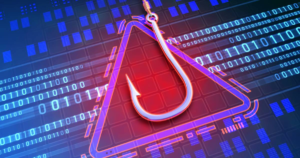How to Protect Your Passwords: Best Practices in Password Management
In today’s interconnected digital world, password security is paramount. As we navigate through the virtual landscape, protecting our sensitive information is a fundamental concern. This article will guide you through the best practices in password management, equipping you with the knowledge and tools to safeguard your online presence effectively.
The Importance of Strong Passwords

In the labyrinth of the internet, strong passwords serve as the formidable gatekeepers to your digital kingdom. They are your first line of defense, protecting your accounts, personal data, and confidential information from prying eyes. A strong password is a digital guardian, a shield against potential threats.
In the realm of strong passwords, complexity reigns supreme. A robust password often comprises a combination of uppercase and lowercase letters, numbers, and special characters. The more complex and unique, the harder it is for malicious actors to decipher. The anatomy of a strong password is like a puzzle with countless possibilities, ensuring that your fortress remains impenetrable.
Tips for Generating Unique Passwords
Crafting unique passwords for each of your online accounts might seem like an overwhelming task, but it’s a task well worth the effort. A common mistake people make is using the same password across multiple accounts, making them vulnerable to a domino effect of breaches if one password is compromised.
One effective strategy for generating unique passwords is to think beyond mere words and numbers. Consider using a mix of seemingly unrelated terms, perhaps interweaving your interests, an element of randomness, and a touch of personal significance. This concoction results in a password as unique as your fingerprint, and as resistant to compromise as a well-forged suit of armor.
The Use of Passphrases
Passphrases, a relative newcomer in the realm of password security, have quickly gained recognition for their effectiveness. Rather than wracking your brain for a complex sequence of characters, passphrases allow you to craft memorable combinations of words, creating a strong yet user-friendly alternative.
Imagine a passphrase as a sentence that only you understand, combining words, spaces, and perhaps even some punctuation. These phrases can be personal anecdotes, favorite quotes, or whimsical imaginings. The key lies in making them long and unpredictable, adding an extra layer of security to your online accounts.
The Dangers of Common Passwords
The allure of convenience often leads to the temptation of using common passwords. Simple combinations such as “123456,” “password,” or “admin” may be easy to remember but are equally easy for cybercriminals to crack. In the digital realm, familiarity breeds vulnerability.
Common passwords are akin to low-hanging fruit for hackers. They can be quickly and easily guessed, providing an effortless gateway to your personal data. Choosing to ignore the risks of common passwords is akin to leaving your front door wide open in a rough neighborhood.
Password Manager Tools

Introduction to Password Managers
Password managers are the unsung heroes of password security. They are the secret keepers that store your passwords securely, allowing you to navigate the digital world with confidence. Password managers are digital vaults, fortified with encryption, where your login credentials are stored for safekeeping.
These tools not only store your passwords but also help you generate and retrieve them. Password managers are designed to simplify your digital life while enhancing your security. They serve as your loyal aides in the ongoing battle against cyber threats.
Benefits of Using a Password Manager
The advantages of incorporating a password manager into your daily routine are plentiful. Beyond secure storage, they offer the convenience of auto-filling login information, saving you time and reducing the risk of human error. Password managers also facilitate the management of complex and unique passwords, allowing you to maintain a strong and impenetrable digital defense.
A password manager acts as a sentinel, guarding your credentials against the prying eyes of hackers. They are your allies in the quest for a secure online existence, ensuring that your data remains out of harm’s way.
Popular Password Manager Options
The realm of password managers offers a plethora of choices, each with its unique features and benefits. Some of the most renowned options include LastPass, Dashlane, 1Password, and Bitwarden, among others.
Each of these managers offers a distinctive combination of features, such as cross-platform compatibility, biometric authentication, and secure sharing. Evaluating these options will help you find the one that aligns with your specific needs and preferences.
Setting Up and Using a Password Manager
Choosing the Right Password Manager
Selecting the right password manager is a pivotal decision in your journey toward better password security. The right manager should cater to your individual requirements, offering seamless integration into your digital life.
When making your choice, consider factors like the manager’s reputation, security protocols, ease of use, and compatibility with your devices and web browsers. Picking a password manager that suits your needs is the cornerstone of efficient password management.
Installing and Configuring Your Password Manager
Installing and configuring your chosen password manager is the initial step in creating a secure password vault. The setup process may vary depending on the manager you select, but it typically involves downloading the application, creating a master password, and setting up your preferences.
Once your manager is up and running, it’s essential to configure its settings to align with your unique security preferences. You might choose to enable auto-fill, automatic password capture, or biometric authentication, depending on the manager’s capabilities.
Importing Existing Passwords
If you’ve been diligent about storing your passwords in various places, you don’t need to start from scratch. Most password managers allow you to import your existing login credentials easily. This feature saves you the hassle of manual data entry and ensures that all your passwords are securely housed in one location.
Organizing and Categorizing Passwords
With your password manager in place, it’s time to get organized. Effectively categorizing and labeling your passwords ensures that you can quickly locate the credentials you need. Grouping your passwords by category or urgency can be particularly helpful when you have a substantial number of logins to manage.
Generating and Storing Passwords
One of the most potent features of a password manager is its ability to generate and store passwords. You can create complex, unique passwords with a single click. The manager will remember these passwords, saving them in your secure digital vault.
This functionality ensures that you never struggle to think up another strong password or risk using a weak, easily guessable one. Your password manager becomes your generator of unbreakable codes and your fortress for storing them.
Mastering Two-Factor Authentication (2FA)
Understanding Two-Factor Authentication
Two-factor authentication (2FA) is a formidable tool in the arsenal of modern password security. It adds an additional layer of defense to your accounts, making it significantly more challenging for unauthorized individuals to access your data.
At its core, 2FA requires two separate verification steps before granting access. This might include something you know, like a password, and something you have, such as a temporary code sent to your smartphone. The combination of these factors creates a robust barrier against cyber intruders.
Setting Up 2FA for Your Accounts
The process of setting up 2FA for your accounts varies by service but generally involves linking your account to a secondary verification method. This can be a smartphone app, a text message, or an email confirmation.
Enabling 2FA is an essential step in strengthening your online security. With 2FA in place, even if your password is compromised, the additional layer of authentication acts as an impassable barrier.
2FA Methods and Apps
Various methods and apps exist for implementing two-factor authentication. Common options include receiving verification codes via SMS, using dedicated authentication apps like Google Authenticator or Authy, or relying on hardware tokens. Each method has its pros and cons, and selecting the right one depends on your preferences and the services you use.
Implementing 2FA is an investment in your digital security, as it significantly reduces the risk of unauthorized access to your accounts. With 2FA in place, you can navigate the digital landscape with a higher level of confidence.
Best Practices for Password Security
Regularly Updating Passwords
In the digital world, stagnation can lead to vulnerability. Regularly updating your passwords is a crucial practice to maintain the security of your accounts. The more frequently you change your passwords, the less likely it is that they will be cracked or exploited.
Establishing a routine for password updates is a habit worth cultivating. Whether it’s every few months or annually, setting a schedule for password changes ensures that your security remains fresh and resilient.
Securing Your Password Manager
While password managers are designed to enhance security, they, too, must be safeguarded. Your master password, in particular, should be treated with the utmost care. Avoid using easily guessable master passwords, and consider enabling additional security features such as biometric authentication.
Additionally, ensure that your password manager is always updated to the latest version. These updates often include security enhancements that protect against newly discovered vulnerabilities.
Avoiding Phishing Scams
Phishing scams are one of the most prevalent threats in the digital world. These fraudulent attempts often mimic legitimate websites, emails, or messages to trick you into divulging your login credentials. Recognizing the signs of phishing and avoiding these traps is essential.
Phishing attempts can be sophisticated, but there are common indicators, such as misspelled URLs, generic greetings, and unsolicited requests for sensitive information. Vigilance and skepticism are your best allies in the fight against phishing.
Monitoring for Data Breaches
Proactive monitoring for data breaches can save you from the aftershocks of a potential compromise. Numerous websites and services offer data breach notification services, alerting you if your email or credentials have been compromised.
Regularly checking for breach alerts can help you take swift action to secure your accounts in the event of a data breach. Timely response is often the key to minimizing the damage caused by such incidents.
Recovering Lost or Forgotten Passwords

How to Recover a Lost Password
Despite all precautions, there may come a time when you forget a password. Panic not; there are methods for recovering lost passwords. Most login screens offer a “Forgot Password” or “Reset Password” option, guiding you through the process of regaining access to your account.
The exact steps vary by service, but the process generally involves verifying your identity through information like email addresses, security questions, or SMS codes. Once your identity is confirmed, you’ll be able to reset your password.
Tips for Safely Retrieving Forgotten Passwords
Password recovery is a delicate process that requires a balance between convenience and security. Be cautious when following password recovery links in emails or on websites; ensure they are from legitimate sources.
To enhance security, double-check the website’s URL to make sure you’re not on a phishing site. If in doubt, initiate the password recovery process directly from the official website or application.
Managing Password Recovery Information
Effective management of your password recovery information is a critical aspect of password security. Ensure that your recovery email addresses and phone numbers are up to date, and that you have a reliable system for storing this data securely.
Incorporate your password recovery information into your overall digital security plan. This should be treated as sensitive data, protected from unauthorized access, yet accessible to you when needed.
Sharing Passwords Securely
The Risks of Sharing Passwords
While it’s generally advised to avoid sharing passwords, there are situations where it’s necessary, such as sharing household accounts or collaborating on projects. However, sharing passwords comes with its own set of risks.
When you share a password, you’re entrusting someone with a key to your digital life. It’s essential to be cautious, selective, and take measures to protect your security when sharing access.
Best Practices for Secure Password Sharing
When sharing passwords is unavoidable, it’s vital to do so securely. Avoid sending passwords via unencrypted methods like email or messaging apps. Instead, utilize secure sharing options provided by password managers, when possible.
Additionally, consider sharing only the specific access needed, rather than handing over your entire login credentials. This minimizes the potential fallout if the shared information is misused.
Sharing Passwords with Trusted Contacts
If you must share a password, do so with trusted individuals only. Establish ground rules for how the shared information should be used and under what circumstances. Effective communication and clear expectations can help minimize the security risks associated with password sharing.
What to Do in Case of a Data Breach

Detecting a Data Breach
Early detection of a data breach is vital for damage control. There are common signs to watch for, such as receiving breach notifications from services you use, unfamiliar activity in your accounts, or sudden changes to your login information.
Pay close attention to any alerts or anomalies in your online accounts. The sooner you detect a breach, the faster you can take action to mitigate its impact.
Steps to Take When Your Passwords Are Compromised
In the unfortunate event of a data breach, swift action is your best defense. The first step is to change the affected passwords immediately. If you’re unsure which accounts were compromised, a full password rotation is advisable.
Next, report the breach to the relevant service or website. They may have protocols in place to address compromised accounts. Additionally, monitor your accounts for unusual activity and set up additional security measures, such as 2FA, to enhance your defenses.
Monitoring Your Online Presence
The commitment to password security extends beyond a single incident. Maintaining a secure digital future requires ongoing vigilance. Regularly review your online presence, check for breach alerts, and update your security practices as needed.
Consider conducting periodic security audits of your online accounts. Verify that your passwords are strong, that 2FA is enabled where possible, and that your password manager remains updated. A proactive approach ensures that your digital security remains a priority.
Conclusion
The Key Takeaways
As we conclude this exploration of password security, it’s vital to reiterate the key takeaways:
Strong passwords are the cornerstone of your online defense.
Password managers are invaluable tools for creating, storing, and retrieving complex passwords.
Two-factor authentication (2FA) adds an extra layer of security to your accounts.
Regularly update your passwords to keep your security fresh.
Stay vigilant against phishing scams and continuously monitor for data breaches.
Secure password sharing is essential when necessary.
Swift action is crucial in case of a data breach.
Ongoing monitoring ensures a secure digital future.
Committing to Strong Password Management
By implementing the best practices in password management, you are actively contributing to a secure digital future for yourself and those around you. Stay vigilant, stay secure, and enjoy the benefits of a protected online presence.
A Secure Digital Future
With a commitment to strong password management, you’re forging a path to a more secure digital future. Embrace the tools and practices outlined in this article, and you’ll navigate the digital landscape with confidence, knowing that your fortress is well-guarded against potential threats. A secure digital future is within reach, and it begins with your dedication to safeguarding your online presence.
Password Management FAQ
What is password management?
Password management refers to the practice of creating, storing, and maintaining secure and unique passwords for your various online accounts. It involves using strategies and tools to enhance the security of your digital identity.
Why is strong password management important?
Strong password management is crucial because it helps protect your personal and sensitive information from cyber threats. Inadequate password security can lead to unauthorized access, identity theft, and data breaches.
What makes a password strong?
A strong password typically includes a combination of uppercase and lowercase letters, numbers, and special characters. It is unique, complex, and not easily guessable. The longer and more random, the better.
What are password managers, and how do they work?
Password managers are software tools or applications that securely store your login credentials for various websites and services. They often generate strong, unique passwords and help you auto-fill them when needed. Password managers are protected by a master password, ensuring that all your passwords are kept in a secure vault.
Are password managers safe to use?
Password managers are generally considered safe to use. They use robust encryption to protect your stored passwords, and the master password adds an extra layer of security. However, it’s crucial to choose a reputable password manager and maintain a strong master password.
How do I choose the right password manager?
Select a password manager based on factors such as security features, cross-platform compatibility, ease of use, and the reputation of the provider. Popular options include LastPass, Dashlane, 1Password, and Bitwarden, among others.
What is two-factor authentication (2FA), and why should I use it?
Two-factor authentication (2FA) is an additional layer of security that requires two forms of verification before granting access to your accounts. It enhances security by combining something you know (a password) with something you have (a code sent to your phone or generated by an app). Enabling 2FA significantly reduces the risk of unauthorized access.
How often should I update my passwords?
Regularly updating passwords is essential for maintaining security. The frequency can vary, but changing them every few months or annually is a common practice. You should update them immediately if you suspect a breach.
What are common signs of a phishing scam, and how can I avoid them?
Phishing scams often involve fake emails, messages, or websites designed to trick you into revealing your login credentials or personal information. Be cautious of misspelled URLs, generic greetings, and unsolicited requests for sensitive data. Avoid clicking on suspicious links and verify the authenticity of the source.
What should I do in case of a data breach?
If you suspect a data breach, change your passwords immediately, especially for the affected accounts. Report the breach to the relevant service or website, monitor your accounts for unusual activity, and consider enabling 2FA for enhanced security.
How can I securely share passwords when necessary?
If password sharing is unavoidable, use secure sharing options provided by password managers. Avoid sending passwords via unencrypted methods like email or messaging apps. Share only the specific access needed, and only with trusted individuals.
What are the benefits of monitoring my online presence?
Continuous monitoring of your online presence helps you detect and respond to security threats more effectively. It ensures that you remain vigilant against potential breaches, phishing scams, and unauthorized access, contributing to a more secure digital future.
In our previous article on the Anatomy of a Phishing Attack, we delved deep into the techniques cybercriminals use to deceive individuals into revealing sensitive information. Understanding the inner workings of these scams is essential in the world of password management, as it equips you with the knowledge needed to recognize and avoid potential threats. Now, let’s explore further how strong password management can protect you against these tactics.
To gain a broader perspective on the importance of password protection and keeping your information safe, you may want to explore a fantastic article on Password Protection: How to Keep Your Information Safe from a trusted source. This article offers insights into various security measures you can implement to safeguard your online presence. By combining this external resource with the internal knowledge you’ve gained here, you can fortify your password management practices and ensure a more secure digital future.







Uma resposta